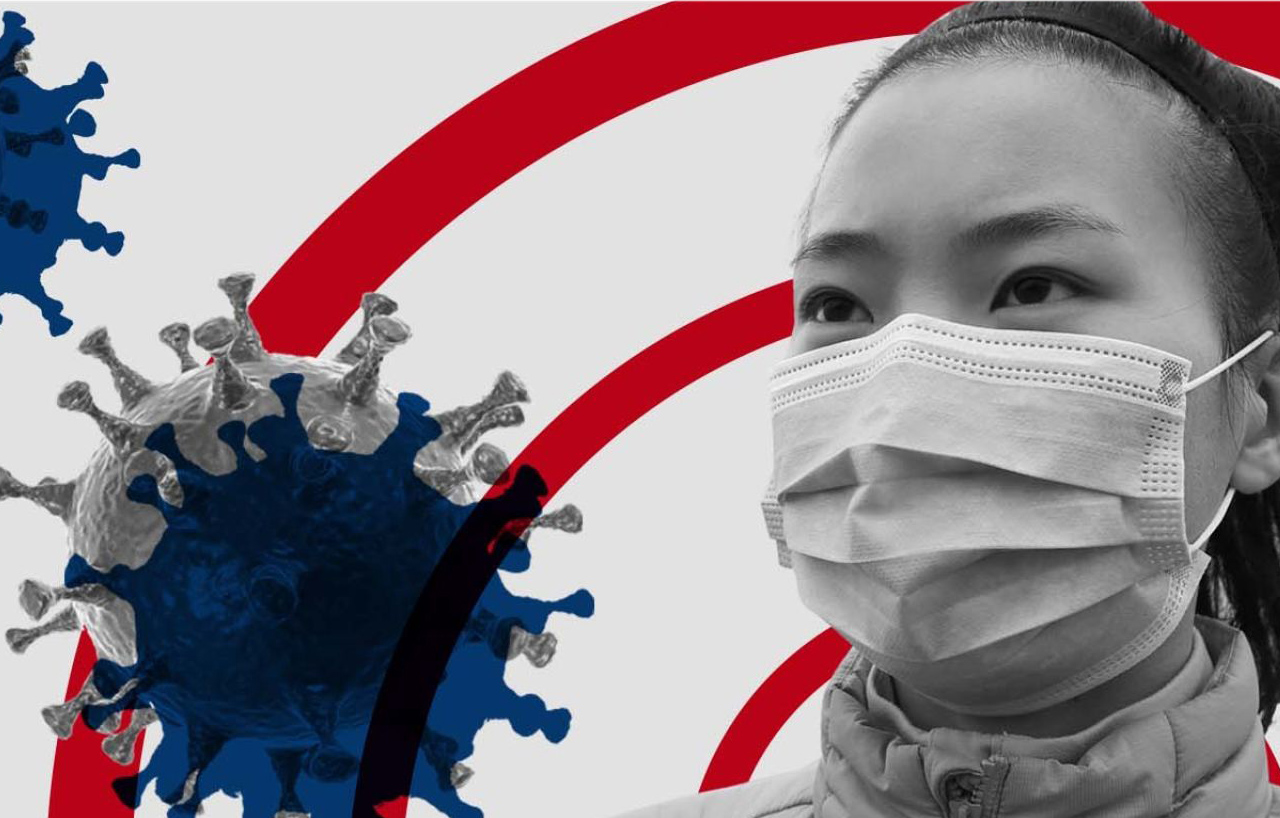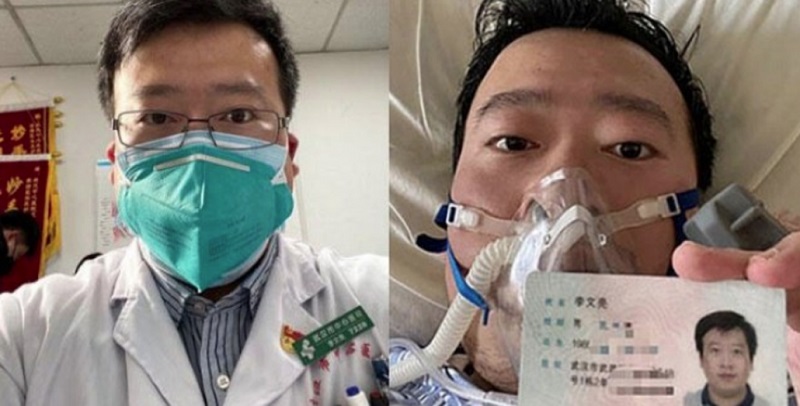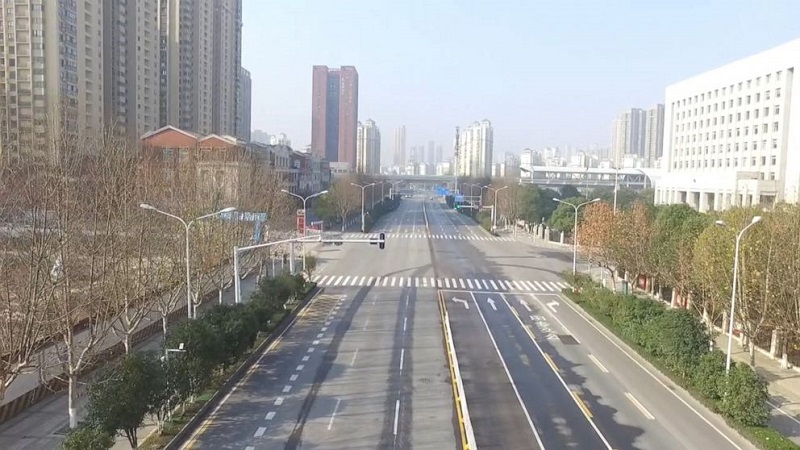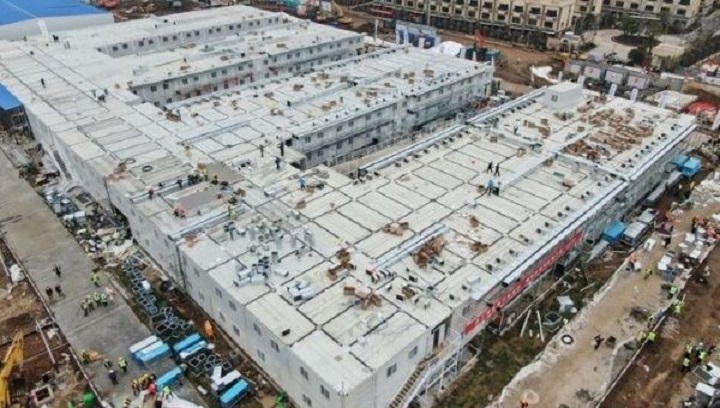This is the first of an exclusive series of reports from inside China that GroundXero would publish in the days to come.
The world is in total disarray. Even the most powerful countries have been brought to their knees by a pathogen, a sub-microscopic entity. What first appeared as an unusual case of flu in the Chinese city of Wuhan in Central China’s Hubei province sometime in mid-December has spread across 190 countries, almost every corner of the earth with human habitation.
The novel coronavirus (or COVID-19) epidemic first spread to countries neighbouring China —Thailand, South Korea, Hong Kong and Singapore, and then to Vietnam, Cambodia and the Philippines. Now the epicentre of the pandemic has shifted to Europe, Italy and Spain in particular, with the disease now threatening to engulf the United States.
The first cases in India were reported more than a month after the outbreak in China, in the last week of January. But now the fear of the virus is palpable in India, evident in the recent knee-jerk reaction of the government, which initially hoped that the virus somehow would spare the country. After realizing the inevitable threat the pandemic posed to the country and the idiocy of their initial “non-action”, the government pressed the panic button, first banning international flights to and from the country followed by a complete lockdown of the country.
This inaction is true of European countries and the US, too, compounded by their inadequate public healthcare facilities and services, and shortage of medical supplies including something as important as reagent test kits, personal protective equipment (PPE) and ventilators, let alone hazmat suites.
But by the time the rest of the world awoke to the reality of the havoc COVID-19 could unleash, China was on way to containing the epidemic within the country. After the initial hiccups and misguided decisions of the local authorities of Wuhan city and Hubei province, the Chinese central government swung into action. Recognizing the destructive power of the pathogen and its highly infectious character, it first locked down Wuhan on January 23.
But much happened between the first novel coronavirus pneumonia cases were detected and the lockdown. Till the last week of December, when two medical staff in two Wuhan hospitals exhibited pneumonia symptoms and were quarantined, there was nothing to suggest that human-to-human transmission of the virus was possible. Until then all the novel coronavirus pneumonia patients had visited the open seafood and meat market in Wuhan, where many believed the virus had originated.
But even before that, Dr Li Wenliang had warned his colleagues that the patients showed signs of severe acute respiratory syndrome (SARS) and urged them to take protective measures against infection. But on the last day of last year, the Wuhan Municipal Health Commission said its investigation didn’t find any obvious human-to-human transmission.
It was then that China officially informed the World Health Organization about the cases in Wuhan. In the first week of January 2020, Dr Li Wenliang was accused of “spreading rumours” and was made to sign a statement acknowledging his “fault” and vowing not to commit any more “unlawful acts”. The Hubei provincial health department kept reiterating that its studies have not shown any clear evidence of human-to-human transmission.
By the end of the first week of January, about 60 people in Wuhan had contracted the virus, and on January 1, China’s Center for Disease Control and Prevention issued a “Level 1 travel watch”, advising visitors to Wuhan to avoid contact with living or dead animals, animal markets, and sick people.
Chinese researchers identified the virus on 8 January but the authorities still insisted that there was no clear evidence of human-to-human transfer. Three days later, Wuhan announced its first death from the novel coronavirus: a man in his sixties who had visited the seafood and meat market. Still, the overall view was that all the unexplained pneumonia patients in Wuhan had not visited the seafood market and meat market.
In the second week of January, Dr Li Wenliang, who had been treating the pneumonia patients, was hospitalised after he started coughing and developed high fever. Also, in the second week of January, the first novel coronavirus infection was reported outside China: a 60-plus woman of Chinese origin in Thailand who had visited Wuhan but not the seafood and meat market.
Yet the World Health Organization, in its report on 14 January, said:
“Preliminary investigations conducted by the Chinese authorities have found no clear evidence of human-to-human transmission of the novel coronavirus identified in Wuhan, China.”
By then Chinese researchers had sequenced the genome of the novel coronavirus, with the World Health Organization giving the virus the scientific name of 2019-nCoV and terming the disease COVID-19.
Was the WHO favouring the Chinese authorities and being guided by them in assessing the threat of the virus? Such questions which are being raised might not be entirely without merit.
By the third week of January, the virus had spread to Japan, with the Japanese authorities declaring that the patient had not visited any seafood markets in China. It was then that the Wuhan city’s health department issued a statement saying the possibility of “limited human-to-human transmission” cannot be ruled out.
The Hubei provincial medical authorities still insisted the virus was “preventable and controllable”. It was only on January 20 that a team from China’s national health department investigating the outbreak said that two people in Guangdong province without any history of visiting the Wuhan market had contracted the virus, showing “human-to-human transmission” was possible.
The next day, the United States Centers for Disease Control and Prevention, reported the first COVID-19 case in the US — a person who had returned from China six days ago. On 22 January, a World Health Organization medical delegation conducted a field visit in Wuhan, following which it said the “deployment of the new test kit nationally suggests that human-to-human transmission is taking place in Wuhan”.
In the more than a month that passed between the first reported COVID-19 cases and the lockdown of Wuhan, the virus had spread to many parts of China and beyond its borders. On 1 February 1, Dr Li Wenliang tested positive for COVID-19, and six days later he died. Stung by the unprecedented public outrage in the wake of Dr Li’s death, the central government was forced to act.
Today, the killer virus has spread to more than 190 countries, and is wreaking havoc in Europe and the US.
But locking down Wuhan, a city with a population of 1.1 crore, could result in chaos, instead of yielding the desired result of containing a highly contagious disease. This is where China’s organizational capability and resource management came into play. It mobilized all the necessary resources, and addressed the logistical problems, by ensuring supplies of essentials such as food, other daily necessities, medicines, medical equipment, doctors, nurses and other medical staff, in Wuhan.
After doing so, it proceeded to lock down the entire province of Hubei, which has a population of 5.8 crores. Flights to and from Hubei were banned, train services stopped and expressway toll gates closed. Only trucks carrying essentials and authorised personnel including medical staffs and health officials were allowed in and out of Hubei.
As for supplying food and other daily necessities to the residents of Hubei, especially Wuhan, China has a sea of volunteers, mostly members of the Communist Youth League, to do that. They receive training in essential services and relief and rescue operations, which comes in handy during emergencies such as natural disasters.
These volunteers’ contribution to public good was evident after the devastating 2008 Sichuan Earthquake whose epicentre was in Wenchuan. It can also be seen after a snowfall in northern Chinese cities like Beijing. No matter how heavy the snowfall is, these volunteers clear the roads and pavements of the snow within hours to facilitate the free flow of vehicles and make pedestrians’ life convenient. The volunteers are highly dedicated people, ever-ready to help. And they have an added advantage, thanks to Chinese tradition and the sense of duty passed down by generations of idealist communist party members, of serving the community without discrimination of religion, class or caste. Something we in India don’t have, notwithstanding a few exceptions.

Community workers use a speaker to publicize the information about prevention and control of the novel coronavirus at a street near the Yellow Crane Pavilion in Wuhan, central China’s Hubei Province, Feb. 7, 2020. (Xinhua/Xiao Yijiu)
The organizational capability of the Chinese government can be gauged from the fact that more than 42,000 medics, including doctors and nurses, were sent from across China to Hubei, the hardest hit province, in the fight against COVID-19. Among them, 7,118 medics from 51 teams worked at two affiliated hospitals of the Wuhan University.
China didn’t know the consequences of the coronavirus outbreak at the outset, particularly because of the local government’s lax response to the epidemic in Wuhan in the early stages.
Moreover, when China announced in late January that it would build two makeshift hospitals in Wuhan in less than two weeks, many people outside China questioned the logic behind it, rather than marveling at the foresight of the Chinese authorities.
Yet when Wuhan, the heart of the novel coronavirus outbreak, raced against time to convert existing venues into three new hospitals in a matter of days to help combat the fast-spreading epidemic, and build two new hospitals, Huoshenshan Hospital and Leishenshan Hospital, in less than two weeks, the effectiveness of China’s move became clear.
For example, the hospital in Wuhan Parlour Convention Centre, was able to house up to 2,000 patients. The 33,940-square-metre Huoshenshan Hospital, staffed with 1,400 doctors, nurses and other medical personnel from the People’s Liberation Army, had 1,000 beds, including 30 intensive care units. And the other specialized hospital, Leishenshan, had 1,500 beds.
The three “converted” and two makeshift hospitals together housed up to 8,000 patients, which were in addition to the existing ones in Wuhan, including two giant hospitals in Wuhan University. In building the two makeshift hospitals, Wuhan replicated Beijing’s SARS treatment model from 2003. Lessons learnt in China, especially if they are painful, are never forgotten.
Having won almost half the battle against the epidemic after cutting off the province of Hubei, especially Wuhan, the epicenter of the outbreak, from the rest of the country, China shifted its focus on the rest of country. It had already tightened quarantine and health check measures at airports, railway stations and bus depots across the country.
Yet, the biggest challenge for China in containing the epidemic was the one week Spring Festival (Chinese Lunar New Year) holiday, when migrant workers, including officials, return home to their families for the all-important family reunion. During the mass migration, by far the largest in the world, crores of people travel in a day starting from a week before the Lunar New Year, which fell on 25 January this year, and again two weeks after the New Year when they return to work. Although trains and buses are not crowded like India, and railway stations are open to only passengers — no visitor is allowed anywhere near platforms — the Chinese government more or less sealed off the stations and bus depots.
The government extended the holiday, first by two weeks and then further. Schools and colleges were ordered not to reopen after the two-month-long winter vacation on 10 February. Factories were closed. Public transport restricted. Entry and departure of vehicles from cities and provinces, too, were restricted. Residential communities in cities were sealed off. Entry was monitored and restricted, with a just one entrance open to even large residential complexes. Flat owners and occupants were allowed in only after their temperature was checked — a practice that continues across China.
Open markets were also closed. Only enclosed markets selling everything a family would need were open. They too have people measuring temperature of customers before allowing them in. The arrangement is still in place — and covers metro stations and bus local depots.
However, perhaps the measures came a bit too late. The lockdown came into force after more than 5 million people have left Hubei, many carrying the virus.
That China could work towards effective containment of the virus was due to the fact that it had (and still has) the cooperation of the people, not least because the literacy in the country is very high. People understand the urgency of the situation, and thanks to lower levels of poverty, compared with India, they are not even half as desperate as Indians.
True, most of the hospitals in China are not purely public (government) hospitals — they are what in India we call public-private partnership hospitals — but the government has a stake in almost of them. It can dictate terms to the hospital management and take over the entire facility if the need arises. And that is precisely what it did across the country. The result: it has managed to largely control the epidemic. In fact, no local infections were reported in Wuhan since March 18.
But all these measures and stringent actions has had a devastating impact on the China’s economy. The closure of not only factories and offices but also shops, hotels and restaurants and by extension the hospitality industry has dealt a serious blow to the real economy as well as the service and financial sectors.
Streets across Chinese cities wore a deserted look for weeks after strict epidemic control and prevention measures were imposed. The closure of factories, construction sites, restaurants and shops means loss of employment, even if temporarily, for millions of people. To make matters worse, about 80 lakh college graduates are expected to enter the job market this year. So China has to ensure employment for not only the existing workforce but also create new jobs for new entrants to the job market. Which in itself, is a humungous task even for an economy as large as China’s.
Compounding China’s problems is the slowing economy. After China and the US agreed to a “phase one” deal in the trade war, the International Monetary Fund on 20 January had raised China’s GDP growth rate to 6.0 percent, but on February 6, global ratings agency S&P lowered it to 5 percent, chiefly because of the impact of the novel coronavirus outbreak.
Indeed, the state of the economy is a big concern for China. As a result, it has decided to strike a balance between epidemic control and prevention measures and reviving the economy — by, among other things, gradually opening the factories, construction sites, tourist spots and other revenue-generating businesses.
Yet to prompt the economy to return to the normal track, China has to ensure that the virus is contained. And to make sure it doesn’t slip on that front, it is now focusing on containing imported cases, for which it has canceled all visas to foreign nationals from 28 March. There is also the potential danger of the so-called second wave of the virus attack. Some people in Wuhan who caught the virus earlier and declared virus-free had to be re-hospitalized in the last two weeks because they were showing mild symptoms and tested corona positive. However, it is too early to say what exactly is happening.
The author is a friend based in Beijing, who prefers to remain anonymous for obvious reasons.






Very informative and descriptive article. It enhances our understanding of the fight against this dangerous virus. India can learn a lot from Chinese experience.